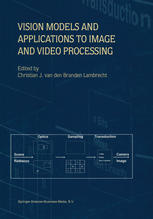

Most ebook files are in PDF format, so you can easily read them using various software such as Foxit Reader or directly on the Google Chrome browser.
Some ebook files are released by publishers in other formats such as .awz, .mobi, .epub, .fb2, etc. You may need to install specific software to read these formats on mobile/PC, such as Calibre.
Please read the tutorial at this link: https://ebookbell.com/faq
We offer FREE conversion to the popular formats you request; however, this may take some time. Therefore, right after payment, please email us, and we will try to provide the service as quickly as possible.
For some exceptional file formats or broken links (if any), please refrain from opening any disputes. Instead, email us first, and we will try to assist within a maximum of 6 hours.
EbookBell Team

5.0
108 reviewsI came to vision science trying to solve an engineering problem: I was trying to come up with test and measurement methodologies for digital video systems. One of the metrics I wanted to use was some measurement of image quality. After some experiments and after an overview of the literature, I had to realize that simple computational metrics, such as the mean square error, are not very effective for this purpose. This led me to study notions of vision science and vision modeling. As an engineer, I found it fascinating. Vision science uses computational tools and modeling techniques that are very similar to what we use in signal processing, yet it brings you to a new domain that lies at the intersection of engineering, biology and cognitive psychology. Over the years, vision science has made tremendous contributions to engineering and to the field of image processing in particular. Such contributions include half toning matrices for the printing industry, color correction for digital cameras, quantization matrices for image coding. As imaging devices are becoming commodities, the impact of vision science is becoming even more significant. This book is meant to appeal to an engineering audience. It is an introduction to vision science and to the design and application of vision models in engineering. To achieve this goal, we have chosen to organize the book around the main components of vision models.